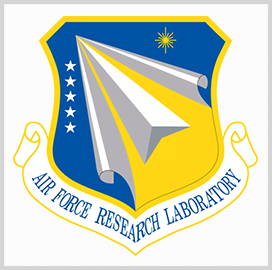
Counter-drone
capabilities transition
AFRL to Manage DDS Counter-Small Unmanned Aerial System Capabilities
The Defense Digital Service plans to have its technologies for sensing and detecting small unmanned aerial systems transferred to the Air Force Research Laboratory by Sept. 30.
According to a spokesperson from the DDS, the AFRL’s Negation of Improvised Non-State Joint Aerial System program will absorb the digital service’s drone-sensing capabilities, including its high-fidelity long-range sensor and user interface for sensor integration.
The transition is part of a memorandum of understanding that the DDS and the AFRL signed in April to collaborate on work focused on counter-sUAS efforts, FedScoop reported Friday.
The DDS, which is headed by Katie Olson on an interim basis, was created as a testbed for innovative technologies within the Department of Defense. New systems are tested at the DDS before being transferred to a permanent home. The same thing happens at the AFRL, with the Air Force unit testing solutions first before delivering them to particular organizations that will use them.
DDS officials hope that moving the counter-sUAS sensor capabilities to the U.S. Air Force will allow the NINJA program to “thrive and evolve” until a program of record is identified, the unnamed spokesperson told FedScoop.
In a statement, DDS’ acting director said that one of the agency’s capabilities is to “rapidly build, buy and deploy the best in technology” to meet the requirements of the Pentagon and the entire defense community.
According to Olson, adding counter-UAS as a portfolio in early 2020 has helped technical experts quickly test ad deliver best-in-class capabilities that support soldiers’ need for real-time detection and tracking of c-UAS threats for mitigation.
“Transitioning these capabilities to AFRL enables their evolution and growth and allows them to continue to support and modernize the DOD defensive posture,” Olson noted.

Category: Defense and Intelligence




